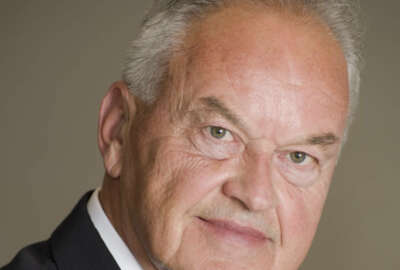
Best day to retire, when’s your magic moment?
In investing, the mantra is "buy low, sell high," and Senior Correspondent Mike Causey stresses the importance of picking the exact right date to retire.
In many trades, crafts or professions, the timing of one’s retirement is no big deal. You might go to the Christmas party, tell the boss what you’ve really thought all those years, then sleep late the following Monday. That’s especially true if the company either no longer offers a pension plan, or never had one.
But if you work for the federal government, timing may not be everything. But it can be very important throughout the year. But especially if you pick one of the two most popular months (December or January) to leave.
For federal and postal workers, the guidelines for retirement are — as they are for investing — well known. But not always followed. Most people know you buy low and sell high. The problem comes when people get (understandably nervous) when the market drops. Or when it may have peaked. Most TSP investors know the rule, but many don’t follow it. Like during the Great Recession when many stopped buying stock funds, and fled to the safety of the Treasury securities G-fund. Many still haven’t returned to the higher-risk, higher-reward C, S and I funds so they missed out on the Great Recovery. Hindsight shows they failed to buy stocks when they were on sale.
Benefits expert Tammy Flanagan says that although many tend to concentrate on the December-January magic dates, there are other best dates too. She is with the National Institute of Transition Planning , and a regular columnist for Government Executive. She points out that there are different “best dates” depending on which retirement system you are under. The Federal Employees Retirement System (FERS) covers nearly 94 percent of all current workers. The others two systems, the Civil Service Retirement System and CSRS Offset, cover only a handful of current workers, although the vast majority of people already retired are under the CSRS or Offset plans. FERS employees get a smaller civil service retirement benefit. But they are covered by (and pay into) Social Security. And they are eligible for a 5 percent government match to their TSP accounts. Because of their more generous federal annuity, fully-indexed to inflation. CSRS and Offset employees are generally in better shape. Investing in the TSP for them is smart, but not required to provide a good retirement income. It is for FERS workers for whom TSP investments will provide one-third to one-half their income in retirement.
More Commentary
Retiring on the last day of the month, any month, Flanagan wrote means your retirement benefit will commence the following day, the first of the month. She also suggests that would-be retirees look “at the end dates of leave periods” which are “popular and logical days to retire. But be careful,” she warns, because “not all of them are great.” When in doubt, check with your HR office. Then double check and, if your agency offers a pre-retirement seminar, go to it.
For end-of-year retirees, the best near future date to retire is Jan. 3, 2017. Doing that gives you the maximum lump sum payment for unused annual leave. If the 1.6 percent pay raise goes into effect — as appears likely — most of that annual leave will be paid at the new higher rate. And retiring on Jan. 3 could help out with your 2016 tax bill because most of the lump sum payment will go on your 2017 tax return when most people will have less income.
Finally, what’s best for your physical, mental health? And your family wishes? While you can save or even make some money by fine-tuning the date, the bottom line is that this is a big-time, one-of-a-kind decision. Most feds can give themselves a pat-on-the-back for making government a career, and for what that will mean for them in retirement. Yesterday’s column was about the very low ball cost of living adjustment that will be announced next Tuesday for federal, military, Social Security retirees. While many are bitter or suspicious about the super-diet COLA that’s coming, it prompted this comment from retiree Bob Lancoine:
“Mike, I use to get myself so upset with all this COLA stuff, but not anymore. Even though I know in my heart the numbers are being manipulated, I have come to the realization that nobody cares. I also have come to terms with the fact that me and my wife have it so much better than most. Why complain? I was standing behind a lady at the pharmacy yesterday waiting for a couple of scripts that I needed to pick up when I overheard the lady behind the counter tell the lady in front of me that her total was over $400 for two prescriptions. My total was $3.29 for two prescriptions. My family isn’t rich by any measure, but we both have great pensions and live a very comfortable life. Doesn’t mean that this COLA process isn’t very flawed, but it’s not going to change and like I said before, nobody cares.”
Nearly Useless Factoid
During the winter, lactating and pregnant female prairie dogs will eat snow to supplement their diet.
Source: Wikipedia
Copyright © 2024 Federal News Network. All rights reserved. This website is not intended for users located within the European Economic Area.
Mike Causey is senior correspondent for Federal News Network and writes his daily Federal Report column on federal employees’ pay, benefits and retirement.
Follow @mcauseyWFED





